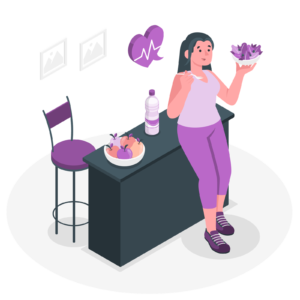Introduction
Workplace wellness challenges have become essential for organizations looking to improve employee health, engagement, and productivity. As more companies recognize the benefits of supporting employee well-being, wellness challenges continue to grow in popularity. In addition, these programs not only promote physical activity but also support mental and emotional health, which ultimately leads to a happier and more productive workforce.
To run successful wellness programs in 2024, companies need effective tools. Wellness challenge platforms offer key features that engage employees, track progress, and provide valuable insights for improving wellness outcomes. As technology continues to evolve, new trends are shaping how wellness challenges are delivered, making it easier for organizations to meet the diverse needs of their employees.
In this blog, we’ll explore the top wellness challenge tools to look for in 2024, focusing on the features that make them stand out, the latest trends in wellness technology, and how to choose the best tool for your organization.
Key Features to Look for in Wellness Challenge Tools

To run successful wellness challenges in 2024, organizations need tools that offer the right features to engage and support their workforce. Here are some key features to consider when selecting a wellness challenge platform:
Customizable Programs:
Every workforce is different, and the best wellness challenge tools offer the flexibility to customize programs. These tools allow companies to tailor challenges to meet the unique needs and preferences of their employees, from fitness challenges to mental well-being activities.
User-friendly Interface:
A simple, intuitive interface is essential for high participation. Look for tools with easy navigation and mobile app compatibility, so employees can access challenges anytime, anywhere. A smooth user experience ensures that employees stay engaged without feeling overwhelmed by complex technology.
Gamification and Engagement Strategies:
Motivation is key to success in wellness challenges, and tools that incorporate gamification help keep employees engaged. Features like rewards, points, leaderboards, and team challenges add an element of fun and competition, encouraging consistent participation and fostering a sense of community.
Holistic Wellness Approach:
The best wellness tools address more than just physical health. Look for platforms that incorporate a holistic approach, integrating mental well-being, stress management, nutrition, and emotional health. This ensures that employees can benefit from a well-rounded program that supports all aspects of wellness.
Comprehensive Data Analytics:
To measure the success of wellness challenges, companies need tools that provide real-time data and actionable insights. The best platforms offer comprehensive analytics, tracking employee participation, progress, and health outcomes. These insights allow organizations to make data-driven decisions, refine future programs, and maximize the impact of their wellness initiatives.
By choosing tools that offer these key features, organizations can create more engaging, effective wellness challenges that deliver lasting results for their workforce. Customizable wellness tools can also help companies achieve not only better employee health but also financial savings. A study posted by the NIH demonstrated that worksite health and wellness interventions can produce 26% reductions in health care costs and 30% reductions in workers’ compensation and disability management claims costs. This makes it even more important to choose tools with the right features to drive these outcomes.
Trends Shaping Wellness Challenge Tools in 2024

As wellness technology continues to evolve, several key trends are shaping the tools companies are using to run wellness challenges in 2024. These trends reflect the changing needs of today’s workforce and the growing emphasis on personalized and holistic well-being.
Personalization of Wellness Tools
Wellness tools are increasingly incorporating artificial intelligence (AI) to deliver personalized wellness plans tailored to individual needs. AI-driven platforms analyze employee data to recommend customized challenges, activities, and wellness goals based on health metrics, preferences, and progress. This level of personalization helps employees feel more connected to the program, increasing engagement and results.
Wellness Tools Integration with Wearables
With the rise of fitness trackers and smartwatches, integration with wearables has become a key trend in wellness tools. Platforms that sync with wearables allow employees to track their activity, heart rate, sleep, and other metrics in real time. This seamless integration not only makes it easier for employees to monitor their progress but also provides employers with valuable data to assess the effectiveness of wellness challenges.
Wellness Tools Focus on Mental Health
Mental health and stress management are becoming top priorities for organizations, and wellness tools are increasingly addressing these needs. Platforms that offer meditation, mindfulness, and stress management challenges are in high demand. Also, by incorporating mental health features, companies can create a more comprehensive wellness program that supports both physical and emotional well-being.
Hybrid and Remote-Friendly Solutions
As hybrid and remote work environments continue to grow, wellness tools are adapting to cater to this shift. For instance, the best platforms offer flexible challenges that employees can participate in regardless of location. This approach not only ensures that both in-office and remote workers can engage in wellness activities but also fosters a sense of inclusion and community across geographically dispersed teams. Ultimately, these adaptations help create a more cohesive and engaged workforce.
Sustainability and Social Wellness
In 2024, there is a growing focus on sustainability and social responsibility as part of holistic wellness programs. Many wellness platforms now include challenges that encourage environmentally friendly practices and community involvement. Whether it’s reducing carbon footprints, supporting local causes, or promoting eco-friendly habits, these programs align with employees’ values and contribute to a sense of purpose and well-being.
These trends highlight the shift towards more personalized, inclusive, and holistic wellness programs that cater to the diverse needs of today’s workforce. By embracing these trends, companies can enhance their wellness initiatives and provide meaningful, lasting benefits to their employees.
How to Choose the Right Wellness Challenge Tool for Your Company

Choosing the right wellness challenge tool for your organization requires careful consideration of various factors to ensure it aligns with your specific needs. Below are key aspects to evaluate when selecting a wellness tool:
1. Assessing Your Company’s Needs
- Evaluate Company Culture: Start by determining how the tool fits within your company’s culture and values. Does it support the type of wellness initiatives that resonate with your employees?
- Workforce Demographics: Consider the diversity of your workforce in terms of age, fitness levels, and interests. Select a tool that offers customization to accommodate these different needs.
- Define Your Goals: Identify what you hope to achieve with wellness challenges—whether it’s improving employee health, boosting engagement, or reducing absenteeism. The right tool should provide features that support your goals.
2. Budget Considerations
- Cost vs. Benefit Analysis: Evaluate the cost of the tool in relation to its potential benefits. Does the platform offer enough value in terms of features and employee engagement to justify the investment?
- Calculate ROI: Understanding the return on investment (ROI) is crucial. Estimate the expected improvements in employee productivity, health outcomes, and cost savings to see if the tool will pay off in the long run.
3. Scalability and Flexibility
- Ability to Grow with Your Company: Select a tool that can scale with your organization as your wellness needs evolve. As your company grows, you may need additional features or the ability to expand participation.
- Flexible Options: Look for tools that offer flexible wellness challenges, allowing you to adapt the program to different employee groups, work environments (remote or in-office), and wellness goals over time.
By assessing these factors, your company will be better positioned to choose a wellness challenge tool that delivers both short-term and long-term value, ensuring a successful wellness program for your workforce.
Top 8 Wellness Challenge Tools to Look for in 2024

To help you make the right decision for your wellness programs, here are the top 8 wellness challenge tools you should consider for 2024:
Woliba
Woliba is a comprehensive platform designed to support all aspects of employee well-being—physical, mental, emotional, and social. It offers customizable wellness challenges, fitness tracking, mindfulness resources, and employee engagement features. Woliba’s intuitive interface and data-driven insights make it a standout option for companies looking to promote holistic wellness.
Virgin Pulse
Virgin Pulse, now Personify Health, is a leading wellness platform that helps organizations create engaging wellness challenges with its gamified experience. It provides features like team challenges, personalized health goals, and progress tracking. The platform integrates with wearable devices, offering a seamless experience for employees.
Wellsteps
WellSteps offers a range of wellness challenges that focus on healthy eating, physical activity, and mental well-being. The platform is user-friendly and provides companies with comprehensive reporting and ROI analytics, making it ideal for organizations looking to track the impact of their wellness initiatives.
MoveSpring
MoveSpring specializes in fitness-based wellness challenges, offering step-tracking competitions and activity-based challenges. It integrates with popular fitness trackers and provides employees with real-time updates and leaderboards, fostering a sense of friendly competition and motivation.
Rally Health
Rally Health is known for its engaging wellness challenges that are customized based on employee health data. The platform focuses on improving overall health outcomes by offering personalized activities, coaching, and health insights. Rally Health also integrates with a range of health plans and wellness resources.
Limeade
Limeade is a platform centered on employee well-being and engagement, offering wellness challenges that promote emotional, mental, and physical health. Its focus on social connections and company culture makes it a great choice for fostering community and collaboration in wellness programs.
Vantage Fit
Vantage Fit is a comprehensive wellness platform that specializes in personalized wellness challenges, fitness tracking, and mental well-being. The platform integrates with wearable devices and offers real-time leaderboards, gamification elements, and health insights. Vantage Fit is designed to engage employees in daily health activities and foster a positive workplace culture.
Yumuuv
Yumuuv is a simple, activity-based wellness challenge platform that focuses on promoting daily movement through step challenges and fitness goals. It provides seamless integration with wearables and offers real-time tracking, leaderboards, and participation reports. Yumuuv is ideal for organizations looking for an easy-to-use tool to boost physical activity among employees
The Importance of Employee Feedback and Program Adjustments

Wellness challenge tools are most effective when they evolve based on employee feedback and changing needs. Regularly gathering input from participants ensures that your wellness program stays relevant and engaging. Here’s why this process is essential:
Gathering Employee Feedback
- Surveys and Polls: Regularly survey employees to understand their experience with the wellness challenges. Ask for input on the types of activities they enjoyed, what challenges they found motivating, and areas where the program can improve.
- Real-Time Feedback: Use wellness tools that offer in-app feedback features or real-time rating systems. This allows employees to provide input while participating, helping you make quick adjustments if necessary.
Adjusting the Program Based on Feedback
- Refining Activities: Based on the feedback, refine or introduce new challenges that better align with your employees’ interests and needs. Offering flexibility in the types of activities available helps ensure broader participation.
- Improving Engagement Strategies: If employees mention that certain engagement strategies, such as rewards or team challenges, were particularly motivating, emphasize these elements in future programs. Adjust the frequency, rewards, or design of challenges to maintain high levels of engagement.
- Continuous Improvement: Wellness is a long-term commitment, and incorporating employee feedback into ongoing program development ensures that it remains dynamic and relevant. This process also builds trust between management and employees, fostering greater participation and a healthier workplace culture.
By regularly seeking employee feedback and making adjustments, companies can optimize their wellness challenges for better participation, higher satisfaction, and improved outcomes over time.
How to Measure the Success of Wellness Challenge Tools

Once you’ve implemented a wellness challenge tool, it’s important to evaluate its effectiveness in achieving your goals. Here are key metrics and methods for assessing the success of your wellness challenge tools:
Participation and Engagement Rates
- Tracking Active Participation: Measure the number of employees actively participating in wellness challenges versus those who signed up but did not engage. High participation rates are often the first sign of a successful wellness program.
- Consistency of Engagement: Analyze how consistently employees engage with the program over time. Are employees completing challenges regularly, or is engagement dropping off after the first few weeks? This helps assess the longevity of your wellness initiatives.
Health Outcomes
- Improvements in Physical and Mental Health: Use data analytics provided by the wellness tool to track measurable health outcomes such as increased physical activity, improved mental well-being, and reduced stress levels. This could include self-reported data or biometric results collected from integrated wearables.
- Reduction in Absenteeism: Compare absenteeism rates before and after implementing the wellness challenge. A reduction in sick days and overall absenteeism is a key indicator of the program’s effectiveness in improving employee health.
Employee Satisfaction and Feedback
- Satisfaction Surveys: Conduct post-challenge surveys to gather feedback on employees’ experiences. Are they satisfied with the challenges, and do they feel motivated to continue engaging in future programs? Positive feedback often correlates with successful wellness outcomes.
- Qualitative Feedback: Gather testimonials and personal stories from employees. Sometimes, individual success stories can highlight the real-world impact of the program, offering insights beyond quantitative data.
Return on Investment (ROI)
- Financial Impact: Calculate the ROI of your wellness program by comparing the costs of implementing the tool to the savings from reduced healthcare expenses, improved productivity, and lower absenteeism. A positive ROI indicates that the tool is not only effective but also financially beneficial to the organization.
By regularly evaluating these metrics, companies can determine the success of their wellness challenge tools, make data-driven decisions for improvement, and maximize the impact of their wellness programs.
Conclusion
Investing in the right wellness challenge tool is critical for both employee well-being and organizational success. In fact, a well-chosen tool can drive engagement, improve employee health, and foster a positive workplace culture. Moreover, by aligning your wellness programs with the latest trends and selecting tools that cater to the unique needs of your workforce, you can ensure that your wellness initiatives deliver lasting results.
In 2024, it’s essential for companies to explore and adopt the best wellness tools in order to stay ahead of the curve. Whether it’s through personalization, integration with wearables, or a focus on holistic wellness, the right tool can make a significant difference in your program’s effectiveness. Ultimately, these investments will enhance employee satisfaction and contribute to the overall success of your organization.
One of the best wellness tools on the market is Woliba. With its comprehensive features, customization options, and data-driven insights, Woliba stands out as a top solution for enhancing employee well-being and ensuring the success of your wellness challenges.








